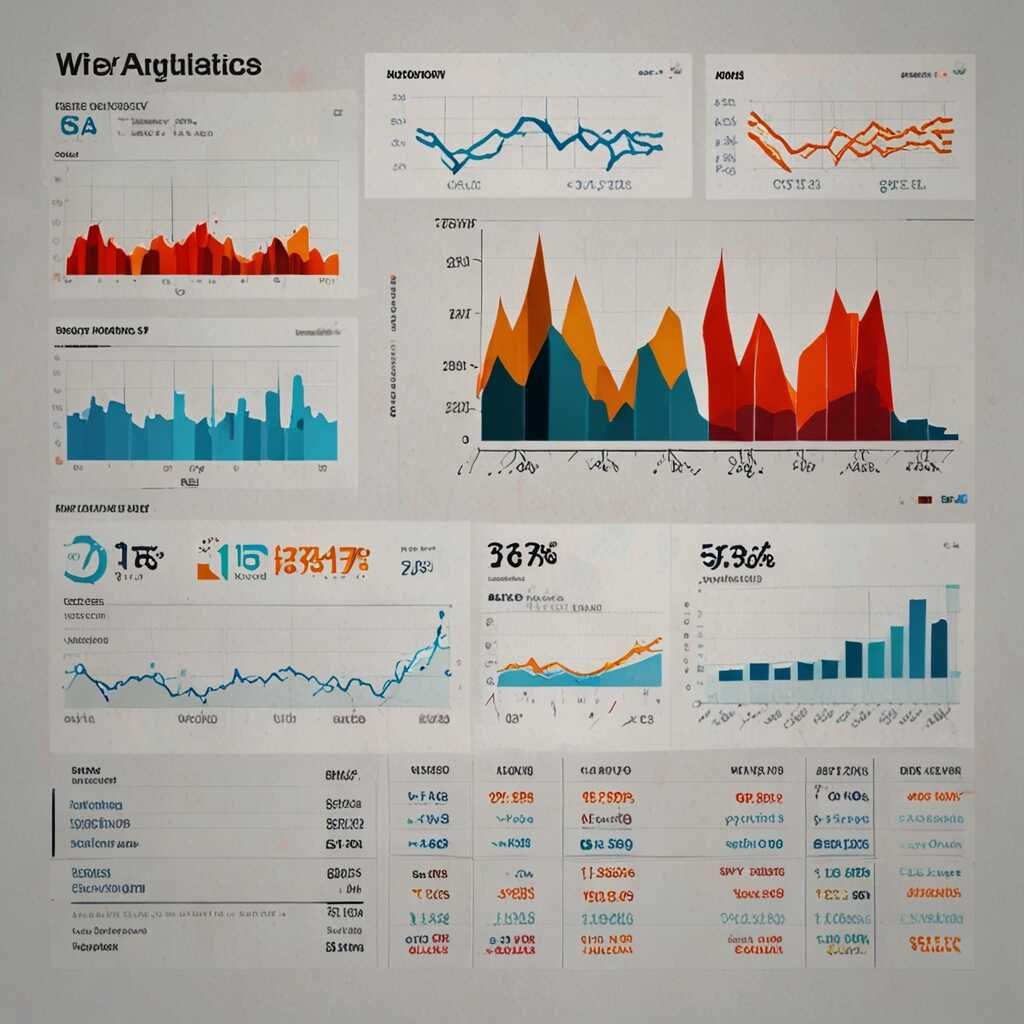Creating an effective international content calendar for SEO success is essential for businesses aiming to expand globally. A well-structured calendar helps you align your content strategies with specific markets, which increases your chances of ranking higher in search engines. At Metrics Rule, we understand that a robust approach to international SEO can significantly enhance your visibility and engagement in diverse audiences. In this article, we will provide you with actionable insights and detailed guidance to implement a successful content calendar tailored to your global marketing efforts.
Importance of a Well-Structured International Content Calendar
An organized content calendar is essential for international SEO as it enhances content production efficiency and messaging consistency across diverse markets. The calendar helps teams plan, schedule, and review content to ensure that it aligns with local interests and search behaviors. Key elements to include are target keywords specific to each market, cultural considerations, publication timelines, and performance metrics. For optimal reach, businesses should aim to target at least three to five global markets, enabling them to gain valuable local insights and tailor their strategies effectively.
Critical Elements for an Effective International Content Calendar
An effective international content calendar should consist of essential elements like localized keyword research, publication schedules, and performance tracking. Localized keyword research ensures that the content resonates with the target audience in each market, significantly enhancing SEO strategies. Including publication schedules helps to maintain a steady flow of content that aligns with cultural events or market trends, thereby improving engagement. Furthermore, regular performance tracking allows for real-time adjustments based on analytics, ensuring that the content remains relevant and effective in reaching the desired international audiences.
Conducting Market Research for Effective Targeting
To conduct effective market research for your international content, you should evaluate several factors. Start with demographic analysis to understand who your audience is in different regions. Consider cultural considerations to tailor your messaging effectively. Doing this ensures you are creating targeted content strategies that align with local needs. You can also study market insights to uncover trends in consumer behavior. Research shows that about 75% of consumers prefer localized content over generic alternatives, highlighting the importance of personalization for maximum engagement.
Understanding Cultural Nuances in Target Markets
Understanding cultural nuances is essential when targeting international audiences. Each culture has unique preferences, values, and communication styles. For example, humor that works in one region might not resonate in another. Conduct in-depth cultural analysis to recognize these differences. Leverage expert insights and local data to validate your findings. Use this information to enhance your content, ensuring it feels relatable and relevant. Adapting your message based on cultural considerations can significantly improve consumer engagement and boost your SEO results.

Developing Multilingual Keyword Strategies
Creating a multilingual keyword strategy involves several key steps. First, conduct thorough local keyword research, utilizing tools like Google Keyword Planner or SEMrush. These tools will help you understand local search behaviors and preferences. Second, consider cultural aspects that influence keyword choices. It’s essential to tailor your keywords to the language nuances and colloquialisms of each target market. Furthermore, keep track of evolving trends as consumer behavior shifts. The ultimate goal is to ensure that your keywords resonate with the local audience, increasing the chances of higher rankings in search engines like Google and Bing. Understanding local dialects and slang can significantly enhance your strategy’s effectiveness.
Tools for Effective Multilingual Keyword Research
Utilizing the right tools for multilingual keyword research is crucial in crafting an effective strategy. Tools like Ahrefs, KeywordTool.io, and Moz can provide valuable insights into keyword performance across different regions. Start by identifying local search terms relevant to your business. Then, test these keywords against local competitors to gauge their effectiveness. Incorporating AI can further streamline this process by analyzing large sets of data quickly, which helps identify emerging trends in local search behaviors. Ensuring that your keyword selection is data-driven can significantly enhance the efficiency and reliability of your international SEO strategies, ultimately leading to better results.
Essential Facts About Global Content Scheduling
- 80% of consumers prefer content in their native language.
- Over 70% of Internet users are non-English speakers.
- Content localization can increase engagement by up to 50%.
- Effective calendars should have at least 12 months of planned content.
- 59% of marketers say their biggest challenge is creating content for different cultures.
- Businesses that localize content see a 23% increase in revenue.
- Using keywords from international markets can improve SEO significantly.

Creating a Flexible and Realistic Content Timeline
A flexible content timeline enhances global SEO strategies by accommodating diverse cultural calendars and time zones. This adaptability can significantly improve engagement across different regions, ensuring that your audience receives relevant content when they’re most likely to engage. When planning your international content calendar, key cultural calendars, such as holidays, festivals, and local events, must be researched and integrated. For effective global content production, it is essential to allocate resources wisely to ensure your team can meet deadlines and maintain quality across various languages and markets, leading to improved SEO success.
Incorporating Cultural Sensitivity Strategies into Content Planning
Incorporating cultural sensitivity strategies into your content planning is crucial for optimizing engagement. Essentially, acknowledging and respecting local traditions enables you to tailor your messaging for diverse audiences. To do this, perform thorough research on the cultural nuances of your target markets. Utilize tools to create an international content calendar that aligns with key dates, ensuring timely content deployment. By integrating local insights and adapting your content, you provide a more personalized experience that enhances user trust and connection, ultimately boosting your SEO rankings in these regions.

Diversifying Content Types for Global Engagement
Creating diverse content types is essential for engaging a wide range of global audiences. Effective strategies include producing engaging blogs, informative videos, and interactive multimedia presentations. Text can deliver in-depth information, while video content can showcase product demonstrations or tutorials. Multimedia, such as podcasts and infographics, can cater to different preferences and enhance user engagement. By mixing these formats, businesses can effectively reach various target groups and maximize their international SEO success.
Comparing Video and Multimedia Effectiveness in International Markets
Video content provides a dynamic way to connect with audiences and often yields higher engagement rates than static formats. Research shows that 80% of consumers prefer watching videos over reading articles, especially in markets where visual culture prevails. Multimedia presentations offer another layer of interactivity and help in effective storytelling; however, they may require more resources to produce. Both formats can be effective, but they should be tested to see which resonates more with specific international audiences. Metrics from Google Analytics can guide adjustments to content strategies, ensuring the optimal blend of videos and multimedia.
Key Advantages of Developing a Global Content Schedule
- Increased visibility in diverse markets boosts brand awareness.
- A structured calendar allows for consistent posting and audience engagement.
- Localization of content enhances relatability for international audiences.
- Higher search engine rankings are achievable through strategic international SEO.
- Improved user experience leads to increased customer satisfaction.
- Effective calendars help in anticipating cultural events and holidays.
- Data-driven strategies can optimize content performance globally.

Aligning Content with Regional Events and Cultural Trends
Businesses can effectively identify and leverage local events by researching community calendars, social media, and news outlets. Platforms like Facebook Events or local event apps provide insights into upcoming happenings. Additionally, engaging with regional influencers can help businesses understand key moments. For cultural trends, brands should stay informed through trend reports and audience feedback. By syncing content with local events and cultural trends, companies enhance their relevance and connection to target markets. Research shows that 70% of consumers engage more with brands that show awareness of their cultural context.
Integrating Cultural Insights into Content Development
Integrating cultural insights into content development involves understanding regional preferences and values. Use analytics tools to track which cultural themes resonate with your audience. For instance, if a major festival or holiday is approaching in a specific market, develop content that reflects this celebration. Case studies reveal that businesses aligning their marketing with local events notice a 30% increase in engagement rates. This practice helps establish reliability and can significantly enhance brand loyalty. Additionally, creating culturally relevant content improves the overall performance of SEO strategies, ensuring businesses reach their audience effectively.
Leveraging Social Media Across Different Regions
To effectively leverage social media, businesses must adapt their strategies to various cultures. This involves understanding cultural nuances, language differences, and regional preferences. Research indicates that posts with localized content resonate better with audiences. Moreover, businesses should select platforms that are popular in each region. For instance, while Facebook and Instagram are widely used in North America, WeChat is more prevalent in China. A localized social media campaign typically takes several weeks to show measurable results, depending on engagement levels and audience response.
Choosing the Right Platforms for Your Audience
Choosing the right social media platforms is essential to maximize international content promotion. Each platform has unique features that cater to specific audiences. For example, LinkedIn is ideal for B2B marketing in professional networks, while TikTok thrives with younger audiences who prefer video content. Conducting research on user demographics helps in identifying the best platforms for targeted outreach. An effective strategy often combines multiple channels to enhance user engagement and improve campaign performance. By localizing content to fit the tastes of regional audiences, businesses can increase their reach and brand visibility across diverse markets.
Comparative Analysis of Brands in International Content Marketing
- HubSpot offers robust marketing tools for global audiences but can be pricey for small businesses.
- Mailchimp provides excellent email marketing solutions, but may lack advanced SEO features.
- Buffer excels in social media scheduling, yet it may require extra steps for local analytics.
- Canva is great for designing content visually but may not provide SEO-friendly templates.
- Contentful is powerful for content management systems, though it can be complex for beginners.
- Wix allows easy website creation but may have limited options for SEO customization.
- BigCommerce targets retailers with specific needs, potentially overlooking other industries.
Assessing the Effectiveness of Your International Content
To evaluate the effectiveness of your international content strategy, focus on key metrics like organic traffic, bounce rate, and conversion rates. Organic traffic shows how well your content ranks in various markets. Bounce rate helps determine if visitors are engaging with your content. High engagement metrics, such as time on page or pages per session, indicate your content’s relevance and quality. User engagement metrics can vary significantly between regions. It’s essential to analyze these differences for pinpointed adjustments. A successful international SEO effort should aim for at least a 20% increase in organic traffic over six months, depending on your baseline. Tracking these metrics with tools like Google Analytics can offer reliable data for ongoing optimization and strategy tweaks.
Understanding Regional Engagement Variations
Understanding how user engagement metrics vary across different international markets is crucial for your global SEO strategy. Different cultures may have varying content preferences, affecting engagement rates. For instance, visual content often performs better in regions with a high social media usage, like Southeast Asia, while in markets like Europe, textual content may yield better results. Analyze data from multiple sources to identify which content resonates best in each region. Use A/B testing to refine your content and enhance user engagement effectively. By addressing these regional insights, you can create a more tailored international content calendar that drives better results, ensuring maximum performance across your global audience.
Common Challenges in International Content Strategy
Creating a global content calendar poses common obstacles, such as cultural differences, language barriers, and diverse audience preferences. For instance, marketers may struggle with localization tactics that resonate effectively with regional audiences. Strategies to overcome these challenges include conducting thorough audience research and utilizing AI-driven tools for keyword optimization adapted to each market. To measure effectiveness, consider audience engagement metrics like bounce rates, click-through rates, and conversion rates, which reflect how well your international content strategies are performing.
Effective Localization Tactics for International Content Success
Localization is essential for ensuring that your content resonates with target audiences in different regions. It involves more than translating text; it requires adapting messages to align with local cultures, customs, and norms. Resources for effective localization include using native speakers for content creation, employing AI tools for keyword translation, and analyzing local competition. Researching local trends enhances cultural relevance, and tracking audience engagement metrics enables you to assess the performance of your localized content. Prioritize gathering feedback to continuously improve and adapt your strategies as needed for different markets.
Recommended Tools for Effective Content Management
Managing an international content calendar efficiently involves using specific tools designed to enhance global SEO strategies. Popular tools like Asana, Trello, and CoSchedule provide integrated solutions for scheduling, tracking, and optimizing content. These tools help ensure that all international content aligns with local SEO needs and market trends. Features such as collaboration capabilities, automation, and analytics allow teams to work seamlessly across different regions. The best tools can also provide data-driven insights to help improve performance and increase engagement across various platforms.
Essential Features in Global Content Management Tools
When selecting content management tools, consider features that are tailored for global marketing. Tools should include multi-language support to accommodate diverse audiences. Automation features for scheduling and publishing can save time and improve reliability. Analytics capabilities allow for performance testing and provide insights on which content performs best. With proven results in improving SEO, these tools help organizations execute effective international marketing campaigns and ensure timely delivery of relevant content. Choosing the right tool in 2025 will be crucial for enhancing your global digital presence.
Best Practices for International SEO and Content Development
To succeed in international SEO, it’s crucial to focus on elements such as local keyword research, adapting content for cultural nuances, and optimizing technical factors like site speed. Understand that cultural differences affect content tone and messaging; for instance, humor might be effective in some markets but not in others. Regular testing and analysis of performance metrics can provide insights into what resonates with diverse audiences. Aim to support multiple languages based on market demand; ideally, a content calendar should accommodate at least three to five languages to enhance accessibility and engagement.
Adapting Content for Different Cultures
Adapting content for different cultures is vital when managing global content strategies. Each market may have unique preferences, traditions, and communication styles. For instance, incorporating local idioms and adjusting the tone can make content feel more relatable. Using global keyword research tools helps identify culturally relevant search terms, ensuring that content aligns with local interests. Additionally, maintaining quality across translations enhances reliability. A well-crafted content calendar can schedule testing and reviews regularly, enabling teams to refine their approach and achieve better engagement results.
Innovative Trends Shaping International Content Strategies
The landscape of international content strategies is constantly evolving, driven by the emergence of new technologies and shifting consumer behaviors. Content creators should focus on integrating mobile optimization into their strategies, as studies suggest that mobile usage will rise significantly in global e-commerce by 2025. AI tools are becoming essential in content creation and personalization, enabling marketers to tailor their messages effectively to diverse audiences. Furthermore, understanding global consumer behavior is critical; as preferences change rapidly, brands must remain agile and steady in testing and refining their approaches to meet audience needs.
Exploring AI Tools for Enhanced Global Content Strategies
AI tools have revolutionized how businesses approach global content strategies. These tools help automate content creation, ensuring reliability and efficiency. By analyzing data on consumer preferences, AI provides insights into the best practices for engaging audiences across different countries. Furthermore, AI facilitates content personalization, tailoring messages to suit local cultures while maintaining brand consistency. This technology enhances the ability to deliver relevant content quickly, improving overall performance in international SEO efforts. As Trends Shift towards greater integration of AI in marketing campaigns, leveraging these tools will become increasingly important for maintaining a competitive edge.
